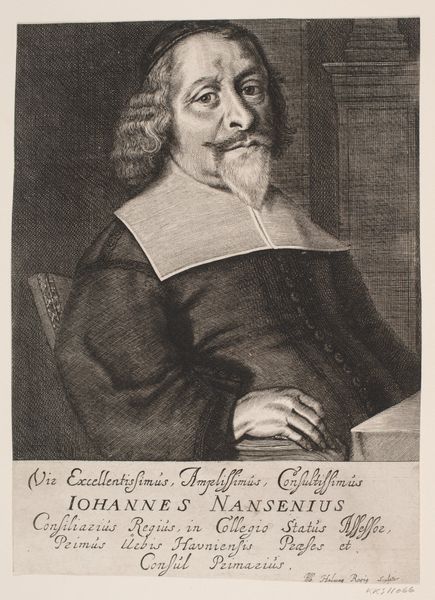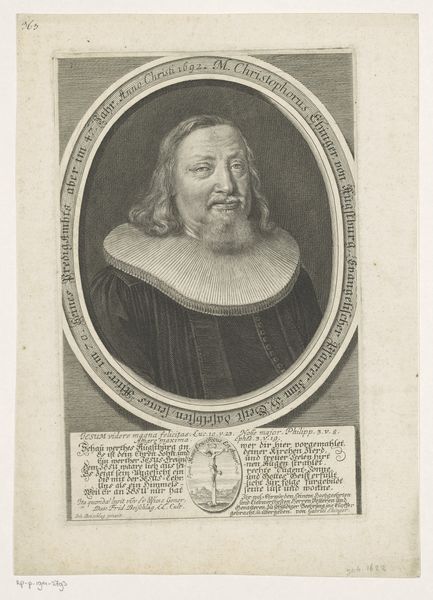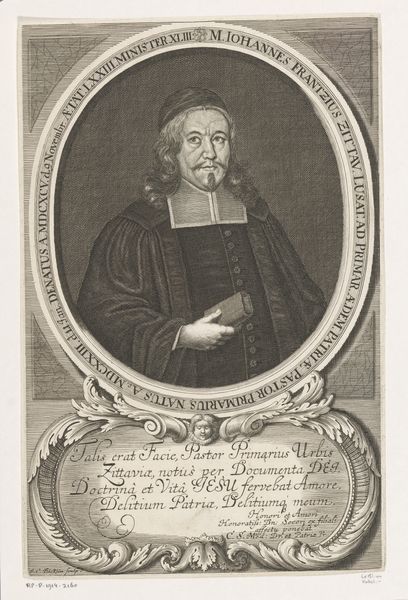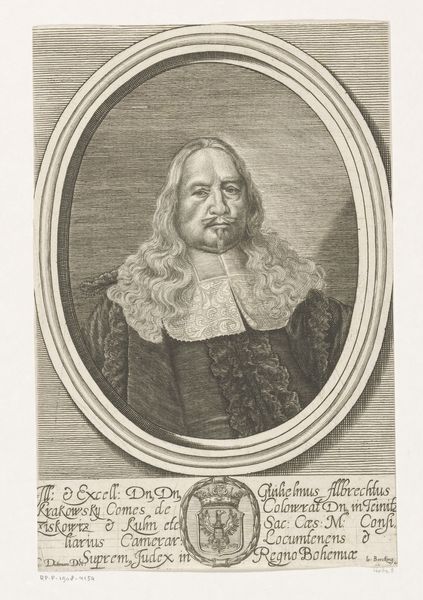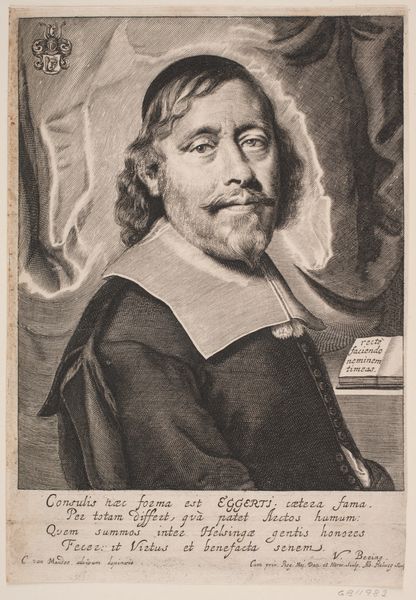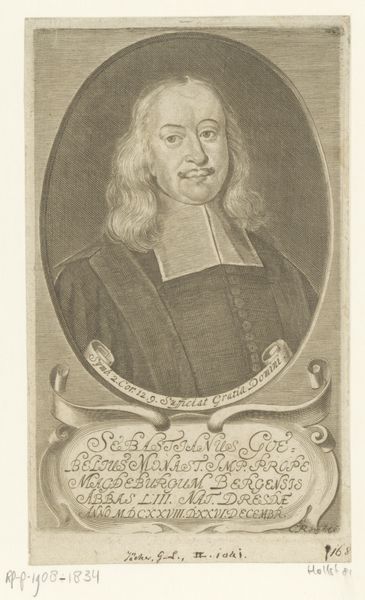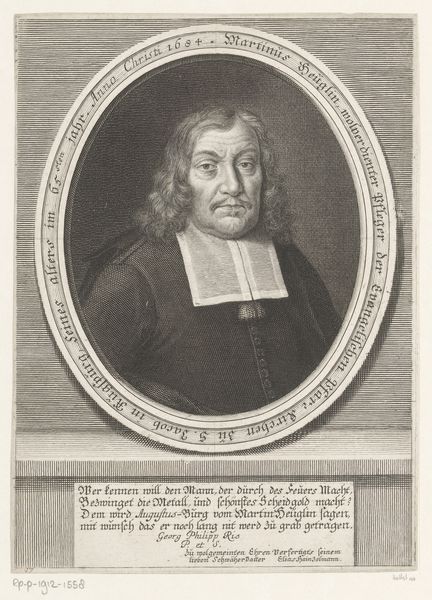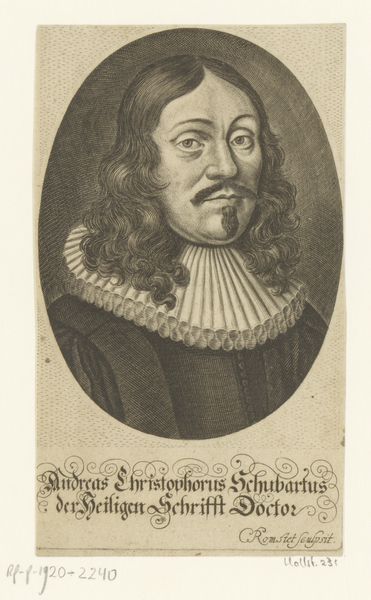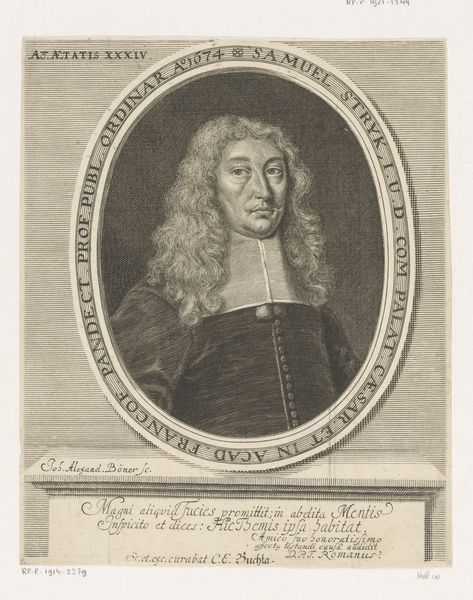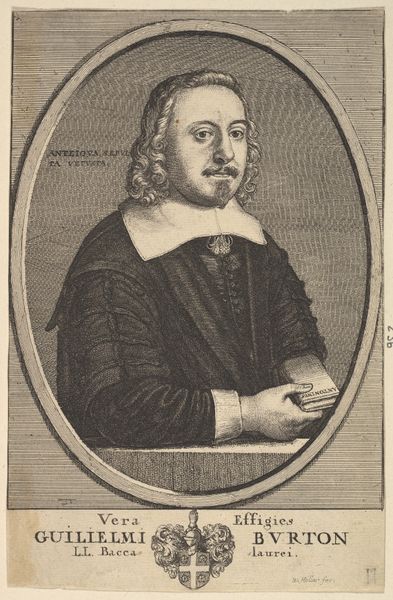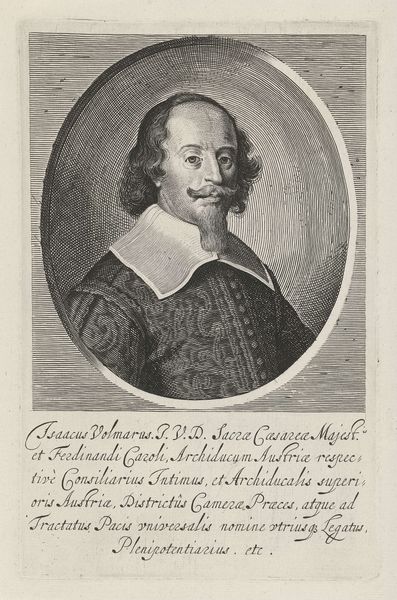
#
pencil drawn
#
photo restoration
# print
#
pencil sketch
#
old engraving style
#
charcoal drawing
#
portrait reference
#
pencil drawing
#
old-timey
#
19th century
#
portrait drawing
Dimensions: 268 mm (height) x 184 mm (width) (bladmaal)
Editor: So, this is Albert Haelwegh's print "Hans Nansen. Fra ligprædiken" from 1668. It's striking how formal and almost austere it feels. What do you see in this piece, particularly given its historical context? Curator: Well, this portrait is interesting in terms of how it presents civic authority. Nansen was a very prominent figure in Copenhagen. These kinds of images were crucial to solidifying power, creating a visual language around leadership. Note the inscription, for instance; it’s a celebration of Nansen's titles and civic roles, reflecting the importance of consolidating reputation in the public eye. How do you think the visual composition contributes to that? Editor: I guess the direct gaze and the formal attire definitely project an image of authority, right? It seems like a very deliberate attempt to project power and stability. The inscription almost feels like another piece of clothing, reinforcing the overall effect. Curator: Exactly. These prints were often commissioned, circulated, and displayed publicly to create a specific impression. The question is, who was the intended audience and what message was the artist trying to communicate about Danish leadership at the time? Think about how different social classes would have interpreted an image like this. The average citizen would most likely only know him from images like these or announcements, and wealthy merchants and elites could collect the prints. Editor: That makes you consider how art functions as a PR campaign for the upper crust. Curator: Precisely. And portraits weren’t merely about individual likeness. They performed social and political work, defining roles and maintaining hierarchies. Hopefully, this work helps us ask the question of to what extent images can truly tell an objective history. Editor: I see what you mean. Looking at this, I'm now more aware of how power is visualized and the kind of impact an image like this could have on society. Curator: And by analyzing such portraits, we start to see how art helps create the narrative of power in specific socio-political settings.
Comments
No comments
Be the first to comment and join the conversation on the ultimate creative platform.
